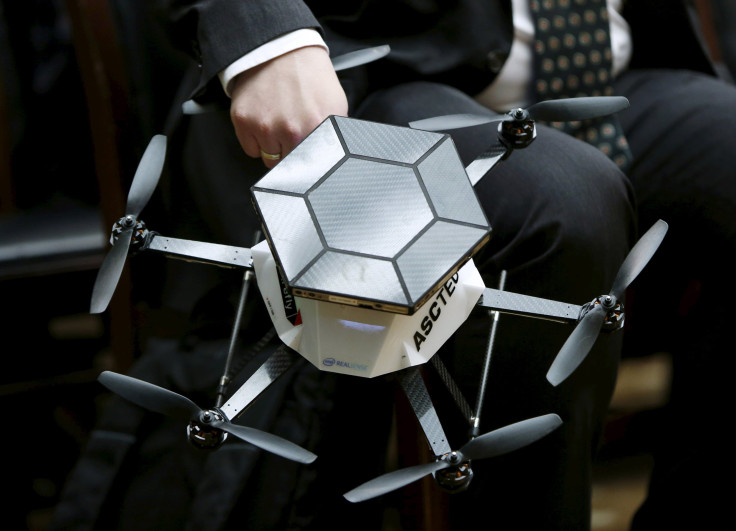Autonomous Drone-Flying Car Hybrid Being Developed At MIT

A research team from the Massachusetts Institute of Technology on Monday shared a drone prototype, which would be able to both drive and fly.
“The ability to both fly and drive is useful in environments with a lot of barriers, since you can fly over ground obstacles and drive under overhead obstacles. Normal drones can't maneuver on the ground at all. A drone with wheels is much more mobile while having only a slight reduction in flying time,” said PhD student Brandon Araki, lead author on the paper.
Read: Air Cargo Transport Getting Cheaper? Boeing 777-Size Drones Might Cut Airfreight Price In Half
The hybrid model could solve the ultimate quagmire for drones — they cannot travel large distances at a go, since flying, even though it is fast and very mobile, is generally limited by battery life. Driving based solutions, on the other hand are limited by obstacles and the low speed of land-based routes. MIT’s Computer Science and Artificial Intelligence laboratory (CSAIL) has developed a system, which will determine the optimal tradeoff between speed and energy use, to make such drones more performance efficient. They will generally fly and drive along pre-set paths. Flying will let such drones surpass obstacles, while driving will let them maneuver into tight spaces.
CSAIL claims that its system can handle up to 80 such vehicles currently.
The project is based on “path planning” algorithms, which will ensure that the drones do not collide. The drones themselves will be designed a tad differently than regular drones — each drone will have two small motors with wheels at the bottom. The drones, during simulations were able to fly up to 90 meters or drive up to 252 meters. Driving did use some of the battery life of the drone — reducing flying altitude by 14 percent. The extra motors will also add weight to the drone, which will need to be taken into consideration while flying it.
The MIT drone seems to be the drone version of flying cars. While human-driven flying cars are being designed to avoid traffic and get to a destination quickly, the self-driven drone will have more applications, including faster deliveries.
“As we begin to develop planning and control algorithms for flying cars, we are encouraged by the possibility of creating robots with these capabilities at small scale. While there are obviously still big challenges to scaling up to vehicles that could actually transport humans, we are inspired by the potential of a future in which flying cars could offer us fast, traffic-free transportation,” CSAIL Director Daniela Rus said in the press release.
Read: Amazon Granted Patent For Drone-And-Parachute Delivery System
The technologies being used in the project — self-driving and flying car tech are under development and have yet to reach mainstream usage. Drones, even though they have been used for military usage, have yet to start being used for consumer-based applications such as making deliveries. But, their becoming mainstream now seems like an inevitability — self-driving cars are being tested globally, Amazon is testing drone-based deliveries and flying cars might be available by the end of the year.
© Copyright IBTimes 2024. All rights reserved.





















